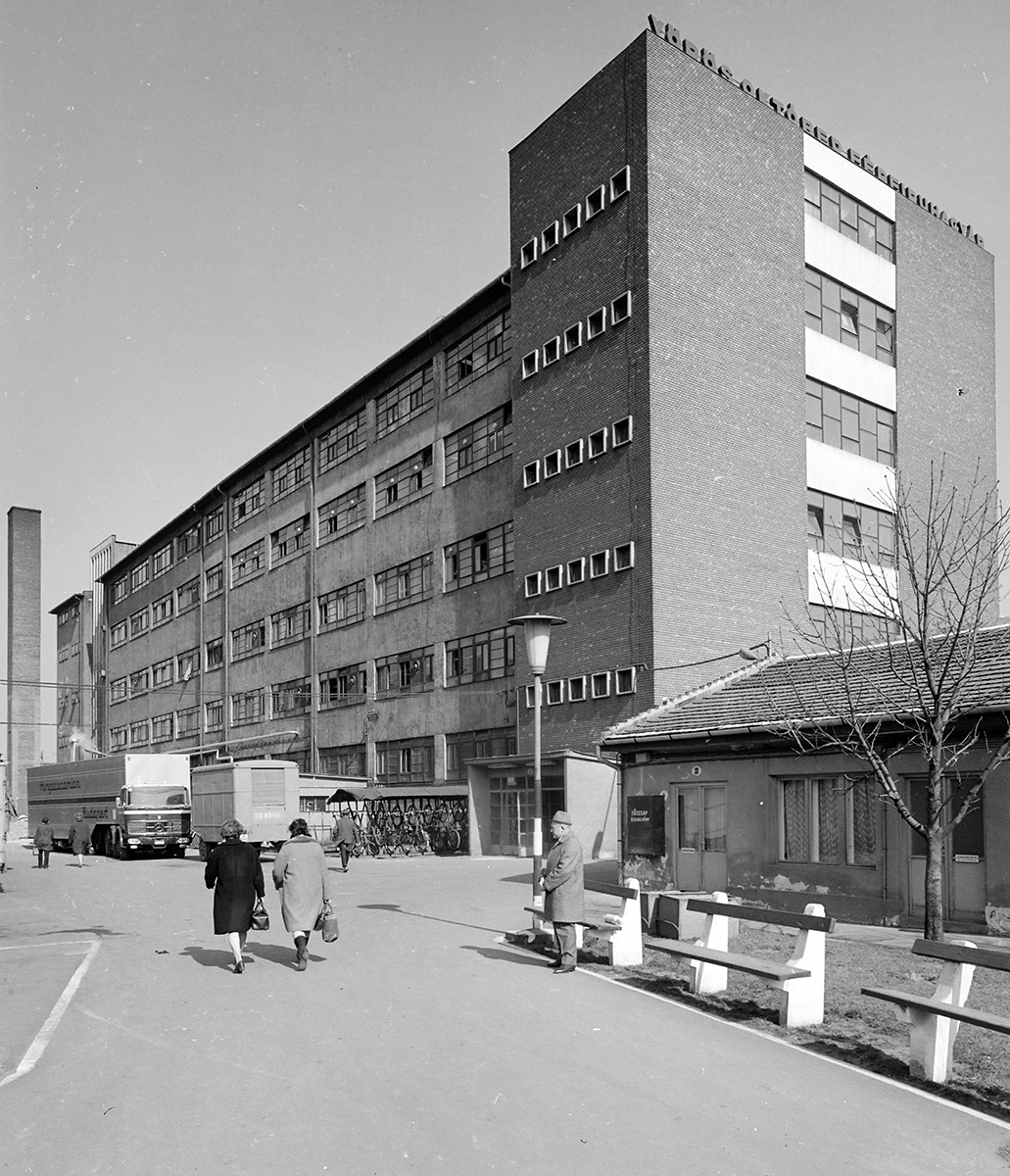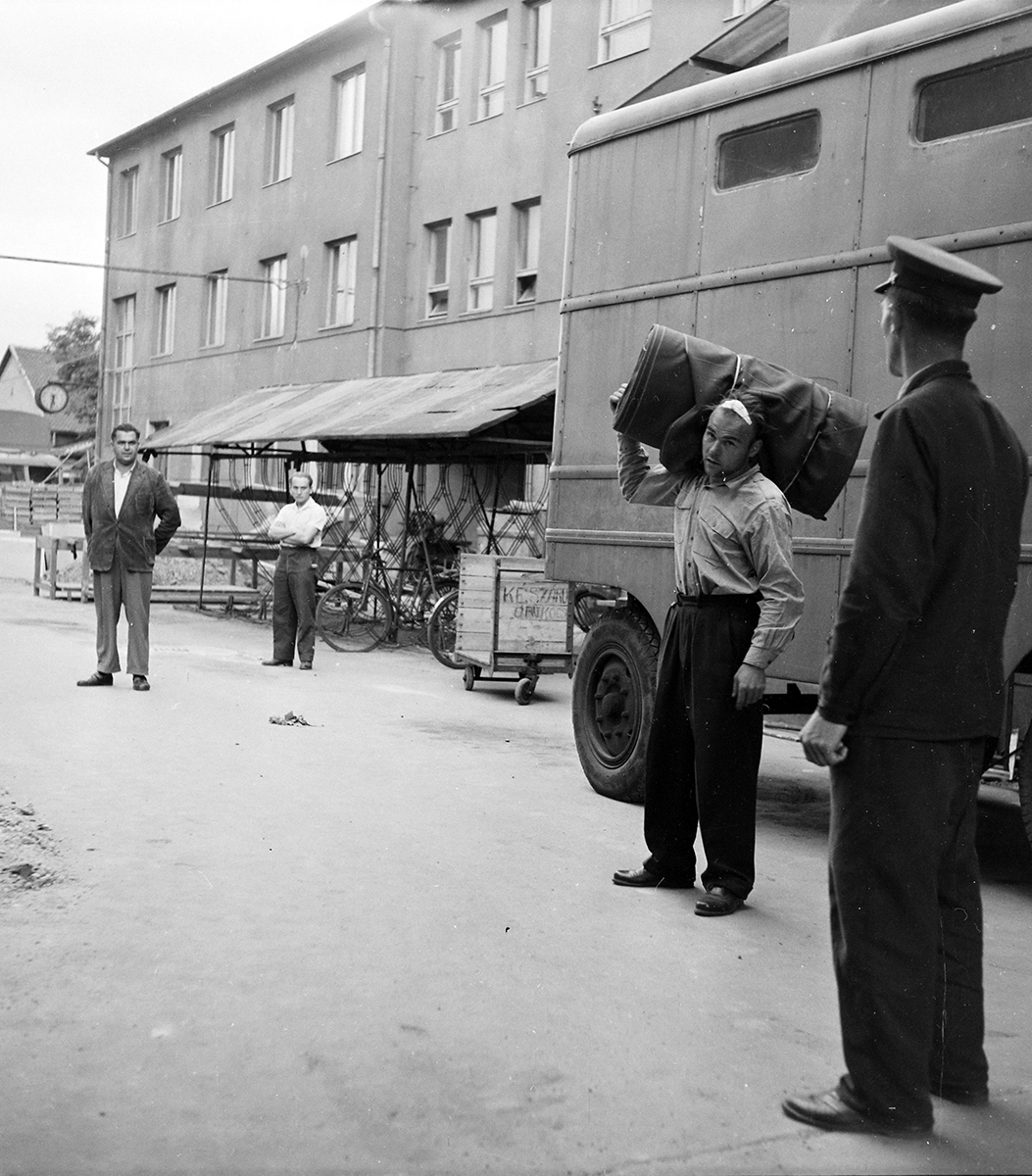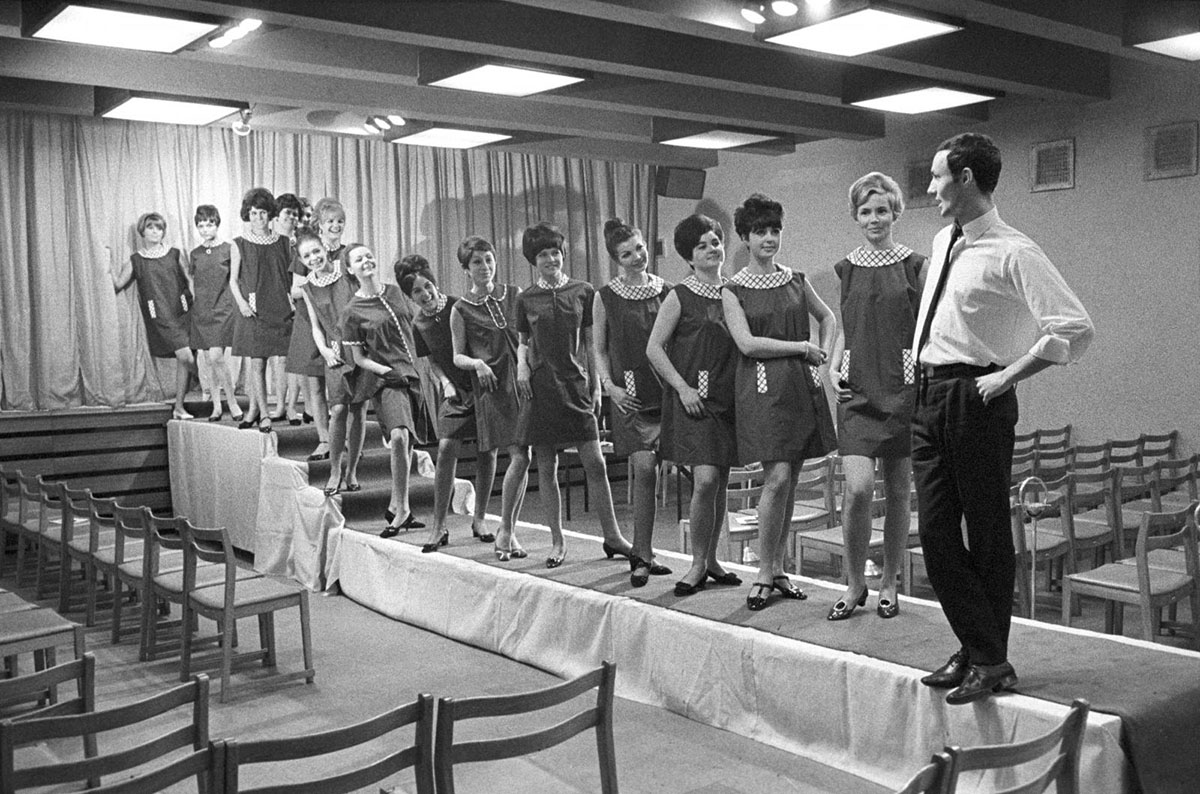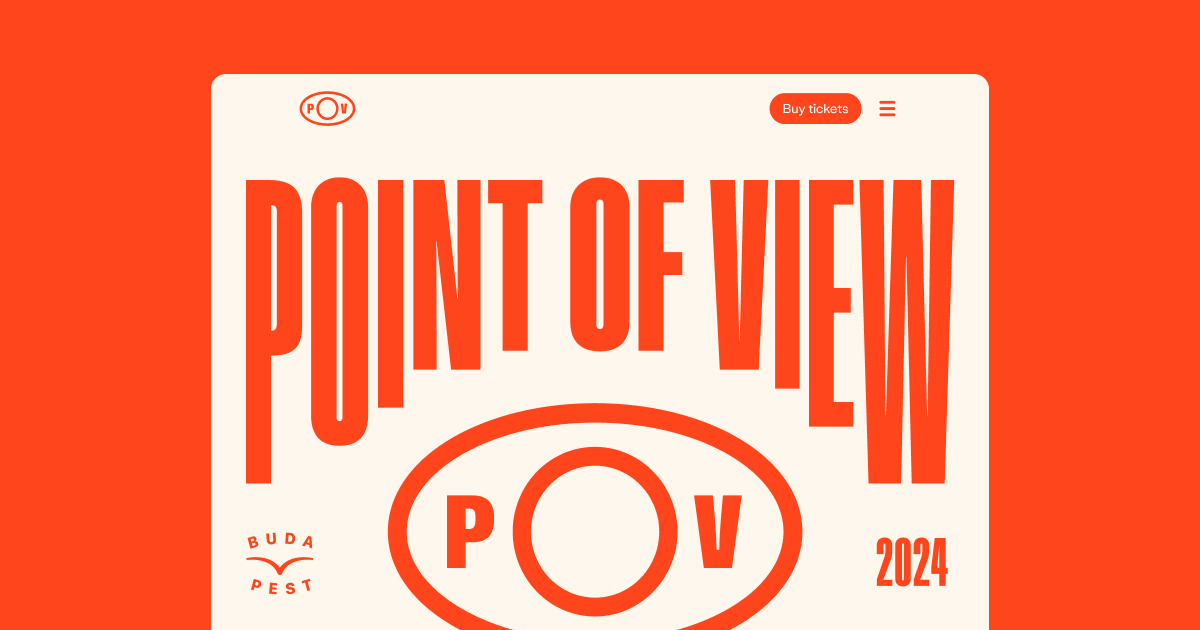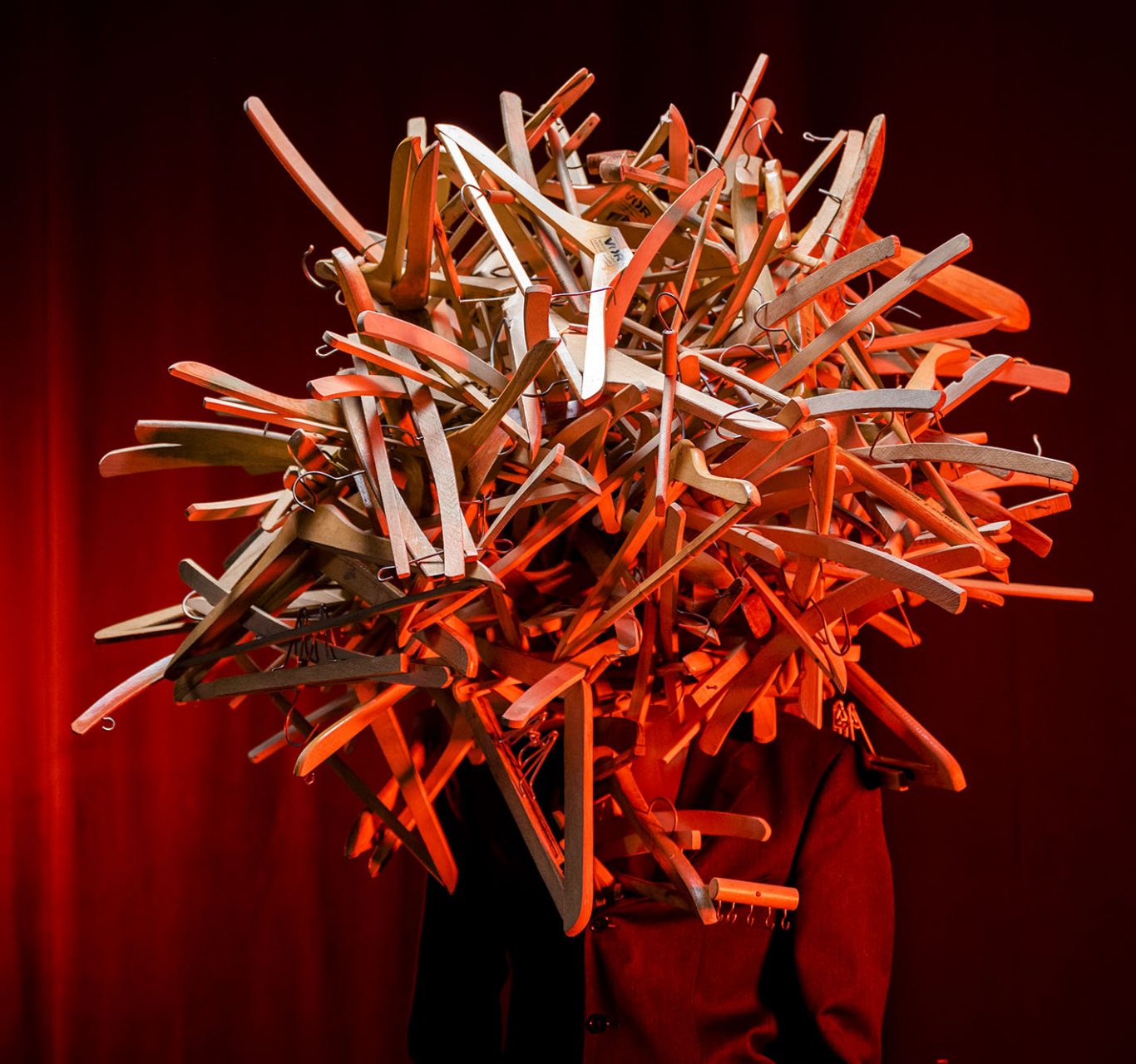
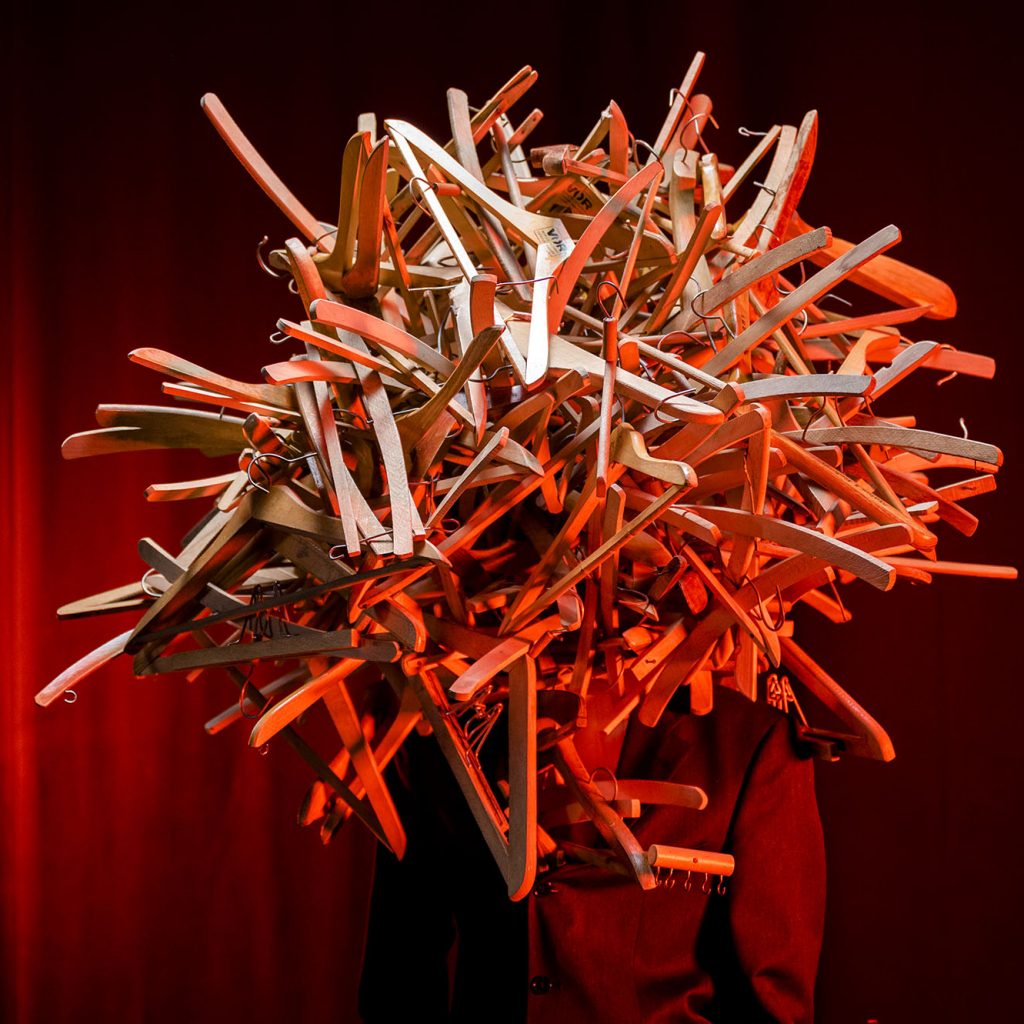
Bullfight at the clothing factory – A video performance by Violetta Vigh
Gender segregation at the workplace is still present today despite women having an increasingly wide range of career opportunities. Looking back at socialist clothing factories for example, we can see several similarities between workplace gender roles now and then. Violetta Vigh were also preoccupied with this idea. In her video, a factory woman is working away non-stop while two men are grappling with each other in the background in their newly made suits. Each character is doing their job, whether sewing or competing, trying to prove themselves in their own way.
In her video art Bullfight in the Red October Clothing Factory, Violetta provides an ironic presentation of traditional gender roles, and uses the trope of the clothing factory worker to point out workplace inequalities resulting from gender differences. The gender pay gap continue to persist to this day, along with negligible female representation in top executive positions. Factories under the planned economy of the Socialist era show a lot of similarity with today’s world in terms of not just gender roles but also consumer culture – just think of the equally exploitative practices of fast fashion brands.
Violetta created her project at the Performance Art course of the Moholy-Nagy University of Art and Design, using newsreels and press articles from the time as a basis for her work. This way, she gained some in-depth insight into the daily workings of socialist clothing factories and the propaganda machine extolling their productivity.
Opened in 1948 and headquartered at Üllői út, the Red October Clothing Factory consisted of 6 factories across the country in 1967 with the one in Dunaújváros (named Stalin City at the time) being among the largest. With her installation Hundun, Violetta created a visual representation of the concept of accumulation using clothes hangers from the Red October Clothing Factory. A being of primordial chaos and unity in Chinese mythology, Hundun is also a symbol of subjects such as the relationship between society and the individual. As work clothes and uniform, the fitted suit worn by the roughly 2.5-meter-tall anthropomorphic figure stands for the restriction of individualism.
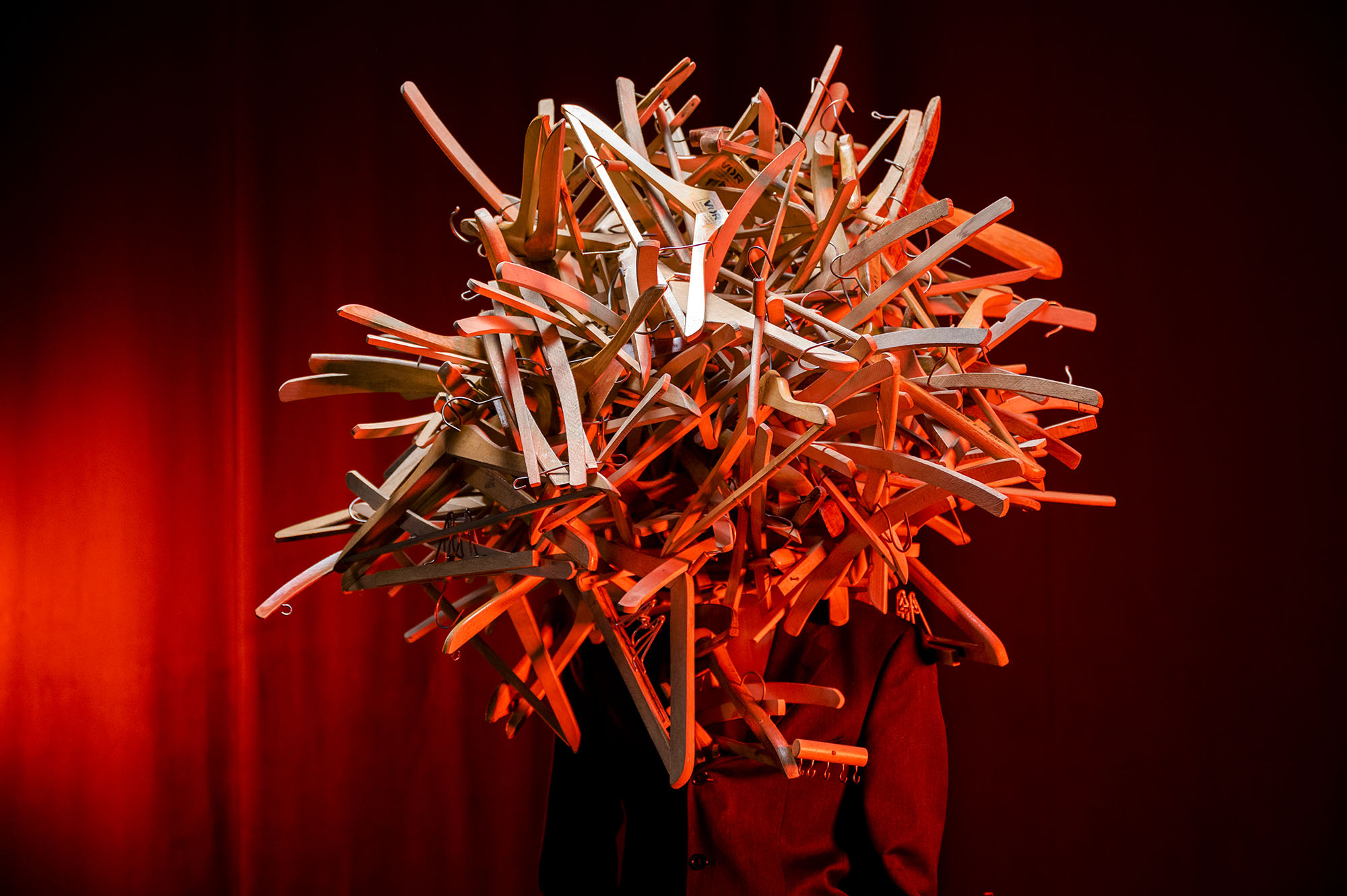
To provide an authentic portrayal of female roles in the clothing industry, Violetta sought help from textile designers and women’s rights experts in addition to historians and former workers. Using the works of media artists Tibor Szemző and Péter Forgács as reference, she condensed this period into a short experimental film, ultimately posing the rhetorical question whether the work ethics of the past truly affects our present day.
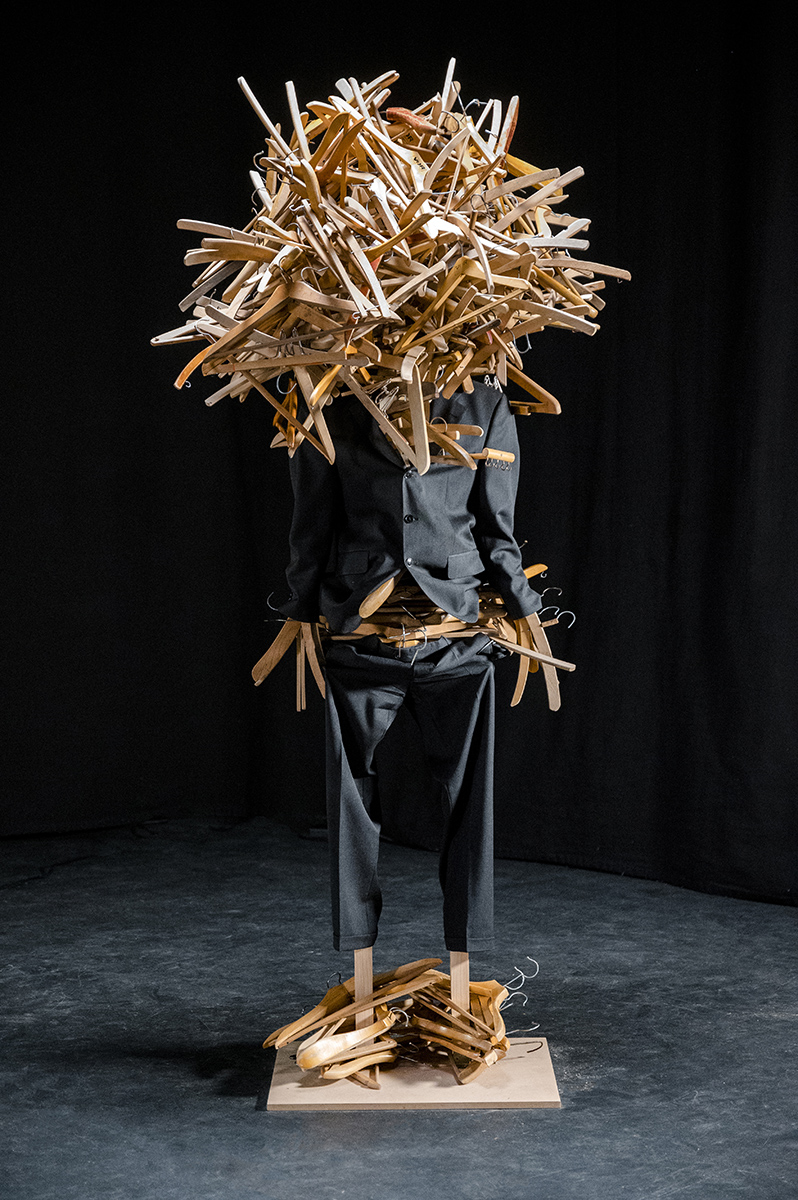

// /
Violetta’s project won the Stefan Lengyel Scholarship, her other works are available HERE!
